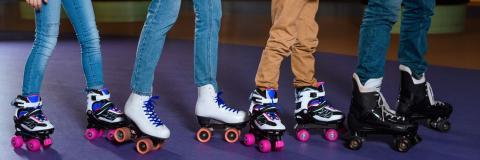
Engaging in recreational activities together as a family is valuable time spent.
Fishing is a popular form of outdoor recreation this time of year. Fishing with your kids can offer benefits to both mental and physical health, while strengthening family connections and teaching life skills. It is important that water safety precautions are in place and children are supervised at all times to ensure everyone has a safe and good time.
Why go fishing? Research suggests that children benefit from the opportunity to play outdoors, where they can explore and enjoy natural environments.1 Access to green space is associated with improved mental well-being, overall health and cognitive development of children. It promotes attention restoration, memory, competence, supportive social groups, self-discipline, moderates stress, improves behaviors and symptoms of ADHD and was even associated with higher standardized test scores for children.4
Physical Activity: According to the 2018 Physical Activity Guidelines for Americans Advisory Committee Scientific Report, "Opportunities to encourage the adoption of lifetime physical activities (e.g., leisure-time pursuits, noncompetitive sports) should be encouraged among all youth. This could help youth identify activities during childhood that they could enjoy and participate in across the lifespan, including outside of school."
Most think of fishing as a relaxing, leisurely activity, and while true that fishing is considered a light-intensity physical activity, research suggests that even bouts of less-intense movement are beneficial to health. Fishing can be made a more physically active pursuit by wading into the water or repeatedly casting a line, and many fishing spots require some walking, hiking or paddling to access.
What do I need to go fishing? According to the Nebraska Game and Parks Commission, the essentials for fishing are simple: "A stick and string or inexpensive rod and reel, a supply of small hooks and weights and a few bobbers are all that is needed. Even the bait can be simple by using cheap pantry items like corn, lunchmeat or bread. Keep it simple and as you gain experience, experiment with advanced techniques and equipment."
Resources to help: If you are new to fishing, know that it is usually not too difficult to find a friend or family member who would be happy to share their pastime with you. There are also great on-line resources available and here are a few websites to check out. If you are not a Nebraska resident, you may want to obtain additional information that is specific to your state.
Sources:
Bento, G., & Dias G. (2017). The importance of outdoor play for young children's healthy development. Porto Biomedical Journal, 2(5), 157-160. doi: 10.1016/j.pbj.2017.03.003.
Brown, A., Djohari, N., & Stolk, P. (2012). Fishing For Answers The Final Report of the Social and Community Benefits of Angling Project. Substance.
Cottrell, S. & Raadik-Cottrell, J. (2010). The North American Conservation Education Strategy: Benefits of Outdoor Skills to Health, Learning and Lifestyle: A Literature Review. A white paper of the Association of Fish & Wildlife Agencies' North American Conservation Education Strategy Funded by a Multistate Conservation Grant of the Sport Fish and Wildlife Restoration Program. Association of Fish & Wildlife Agencies.
McCormick, R. (2017). Does Access to Green Space Impact the Mental Well-being of Children: A Systematic Review. Journal of Pediatric Nursing, 37, 3-7. doi: 10.1016/j.pedn.2017.08.027
2018 Physical Activity Guidelines Advisory Committee. (2018). 2018 Physical Activity Guidelines Advisory Committee Scientific Report. Washington, DC: U.S. Department of Health and Human Services.
Schroeder, S.A., Nemeth, M.L., Sigurdson, R.E., & Walsh, R.J. (2008). Untangling the Line: Constraints to Fishing Participation in Communities of Color. Urban and Community Fisheries Programs: Development, Management, and Evaluation. American Fisheries Society Symposium.
U.S. National Library of Medicine. (2016). Water Safety (Recreational).
Kansas State. (1999). Examples of Physical Activities by Intensity.
This newsletter has been peer-reviewed and was originally written by Laura DeWitt.
Feedback Form
Feedback Form
If you do not see the article, please scroll up the page.








